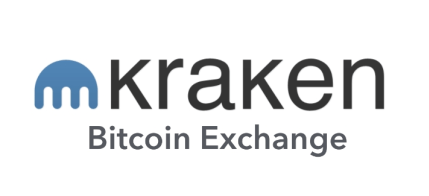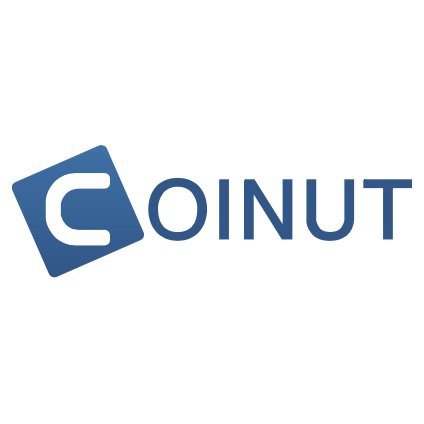 One of the questions a trader gets asked most by someone who wants in on crypto trading (and profits!) is “How do I buy Bitcoins?” (or Ethereum or Litecoins, etc.). Although a seemingly important question — I avoid answering it because it shows you are not ready to buy, let alone trade crypto. Research first. Anyone who has heard or was in since the MtGox days knows that a risk every trader must put into consideration is exchanges.
One of the questions a trader gets asked most by someone who wants in on crypto trading (and profits!) is “How do I buy Bitcoins?” (or Ethereum or Litecoins, etc.). Although a seemingly important question — I avoid answering it because it shows you are not ready to buy, let alone trade crypto. Research first. Anyone who has heard or was in since the MtGox days knows that a risk every trader must put into consideration is exchanges.
To put it simply, exchanges are currency converters. They allow you to turn fiat into crypto and crypto into other crypto. BTC (or XBT, depending on your exchange) is the gateway to all crypto. It is the USD in other words. Some exchanges have ETH as a gateway to only certain other currencies.
Say you want to purchase some Ethereum Classic for example; you will need to purchase/exchange fiat for BTC and then exchange or trade for ETC. Immediately you understand how Bitcoin will also act like a market index due to this reason of being a gateway. i.e. What follows is a quick insight on my experience with exchanges, good and bad. Do your own research and select one or two that fit your needs best — this is in terms of security, order execution and [lastly] variety. For major pairs I am now only trading on Coinut — see below why.

Coinbase/GDAX:
Go to place to buy your BTC to trade on Coinut. Down often during dips — missed opportunity.
Coinbase is really the go to for many newcomers. The reason is it is the quickest and easiest way to turn fiat into BTC/LTC/ETH. You can purchase with your credit card once verified and slowly raise your limits. For larger orders I would recommend bank transfers as there are fees on card buys — think of it as paying for convenience. You and I both get $10 if you use this link: Coinbase. Welcome.
GDAX is the trading platform owned by Coinbase. Here you can trade the major large cap BTC pairs with stop/limit orders. Also, you can use leverage — but in this case you are not buying the currency outright. I.e. you cannot enter a leveraged position and then send your bought currency to your hardware/software wallet off the exchange. Almost always stay away from leverage — this is not FX. Thank me later.
Although Coinbase is very efficient in being used to get your initial trading capital once you increase your limits [between 15–25k USD weekly max], it also has some serious shortcoming. The number one issue is downtime during dips. BTC dips 22% and you cannot buy it because Coinbase goes down — I don’t believe this is manipulation, rather genuine overload as 2017 has seen a surge of newcomers.
GDAX goes down with Coinbase. Another serious recent event was the flash crash of ETH from over $300 to $0.10. If you were in a leveraged position you lost it all [and later by decision got reimbursed]. GDAX was the only exchange to experience this. No leverage no problem — but you shouldn’t keep your large sums on an exchange anyway.
Support takes days to get back to you — another red flag for me.

Kraken:
Not bad, decent variety. Slow support.
One of the better exchanges that I initially traded on a lot to get access to assets/currencies that were not available on Coinbase/GDAX. Quick examples would be XRP and ICN (made an absolute killing on XRP Q1-Q2 2017 — see charts). In general a very good exchange with good charts. I continue to use cryptowat.ch, and only trade here for ICN at the moment. Support takes days, but is generally helpful. A red flag here (and it is not their fault) is DDoS attacks that — if you are leveraged you have no problem. Again, keep your stash off the exchange and stay away from leverage. The reason I trade majors on Coinut now is for the 0% fees if done right. 0.15–0.25% adds up when you’re moving large numbers around, but that being said it is a convenience and they offer fiat to crypto gateways.
Poloniex:
No. Thank me later. Yes, I’ve traded here.
Bittrex:
Bittrex has cleaned up its reputation a lot. It also offers a very wide range of crypto. I have only ever traded here to get the few I cannot get elsewhere. No comment on which, I do not analyze or recommend small caps. In general if you don’t know what you are doing stick to large and mid caps with at least 8% liquidity per day (as a % of market cap). Stay away from shitcoins as there are serious pump and dump that can be performed by a few whales. Large caps cannot be manipulated. Also, the site is slow and orders can take long to execute — slippage down is bad news.

Coinut:
Hands down my favorite exchange for major pairs. Accumulating ETC daily here.
Coinut is raising the bar. However, it is a crypto to crypto only exchange. This means you will have to purchase your BTC somewhere like Coinbase or Kraken and then send it over to your Coinut account. The support is excellent and the CEO is regularly on the chatbox making sure things are smooth. GUI is pretty good and their backend is very quick. I have not yet tried to plug in their API, but expect it to be work quick like the site. Your options here are only majors; BTC, LTC, ETC, ETH. This is where I am buying up 90% of my Ethereum Classic with 0% fees. If you are a market maker you currently get charged nothing — this will not last trust me. Now if you buy $100 it’s miniscule. If you are in five figures though, you want to keep this in mind (GDAX can also be had at zero %, but every time there is a buying opportunity/BTFD, it locks up with the Coinbase unavailable blue screen of death).
Zero fees: Say you want to buy up LTC and it is currently at 0.001621 — just set your limit to 0.001620 and you become the market maker. If you use market price you are the taker. On that note, you have to learn to think in BTC. USD is understandable — but when you flip into thinking bitcoin you will spot opportunities quicker. I think in both, BTC first, USD second.
In closing I want to stress that I do not fully trust any exchange. I leave minimal amounts of crypto on there to fill orders to trade in and out of opportunities. Say ETC drops, I’ll can quickly pick some up and then leave an order for a very low just in case it fills (hey, I’ve been lucky sometimes…). That being said, I am on the exchange no more than 10–15 minutes to do my trading and I get out — I will send large sums over to my intermediary (software) wallet or cold hardware wallet. The exchange is not your wallet. Sure when you want to sell back into crypto, just send your crypto over to Coinbase/Kraken and wire it to your bank, but do not leave it there [read MtGox crash]. There will be a post on security in coming days — but for now enable second factor authentication [2FA] anywhere applicable. You are your bank, be a safe one.
If you found this post useful and want to thank me, the gesture is most welcome. A simple vote up will keep me writing.
Litecoins: LPh4MayLMDqYAVSumnoSMyRhVS1EmvEVaS
Bitcoin: 1JfHAGJ2mNrT2FcJkVyiWZfrpGeEiyou6J![]
Thanks for the tips, will keep them in mind :)
Downvoting a post can decrease pending rewards and make it less visible. Common reasons:
Submit
Wherever you trade, stay safe and stay in profit ;)
Downvoting a post can decrease pending rewards and make it less visible. Common reasons:
Submit
This post received a 4.8% upvote from @randowhale thanks to @nxah! For more information, click here!
Downvoting a post can decrease pending rewards and make it less visible. Common reasons:
Submit